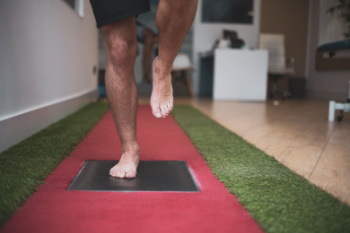Garner (919) 661-4150
Foot Structure and Common Conditions
Tuesday, 27 August 2024 00:00
The foot is a complex structure essential for mobility and balance, consisting of various bones, ligaments, and joints. It includes 26 bones, categorized into three types, which are the tarsals, metatarsals, and phalanges. The tarsals form the rear part of the foot, including the heel and ankle bones. The metatarsals make up the middle part, while the phalanges are the toe bones. This intricate arrangement supports the body’s weight, absorbs shock, and allows for diverse movements. Common foot conditions such as flat feet, plantar fasciitis, and bunions can arise from structural abnormalities or excessive stress. Understanding the anatomy and function of the foot helps in diagnosing and managing these conditions effectively. If you have a foot condition that is causing you pain and discomfort, it is suggested that you consult a podiatrist who can diagnose the cause of your foot pain, and treat it accordingly.
If you have any concerns about your feet, contact Chukwuma Ukata, DPM from Advanced Carolina Foot and Ankle Center. Our doctor can provide the care you need to keep you pain-free and on your feet.
Biomechanics in Podiatry
Podiatric biomechanics is a particular sector of specialty podiatry with licensed practitioners who are trained to diagnose and treat conditions affecting the foot, ankle and lower leg. Biomechanics deals with the forces that act against the body, causing an interference with the biological structures. It focuses on the movement of the ankle, the foot and the forces that interact with them.
A History of Biomechanics
- Biomechanics dates back to the BC era in Egypt where evidence of professional foot care has been recorded.
- In 1974, biomechanics gained a higher profile from the studies of Merton Root, who claimed that by changing or controlling the forces between the ankle and the foot, corrections or conditions could be implemented to gain strength and coordination in the area.
Modern technological improvements are based on past theories and therapeutic processes that provide a better understanding of podiatric concepts for biomechanics. Computers can provide accurate information about the forces and patterns of the feet and lower legs.
Understanding biomechanics of the feet can help improve and eliminate pain, stopping further stress to the foot.
If you have any questions please feel free to contact our office located in Garner, NC . We offer the newest diagnostic and treatment technologies for all your foot and ankle needs.






